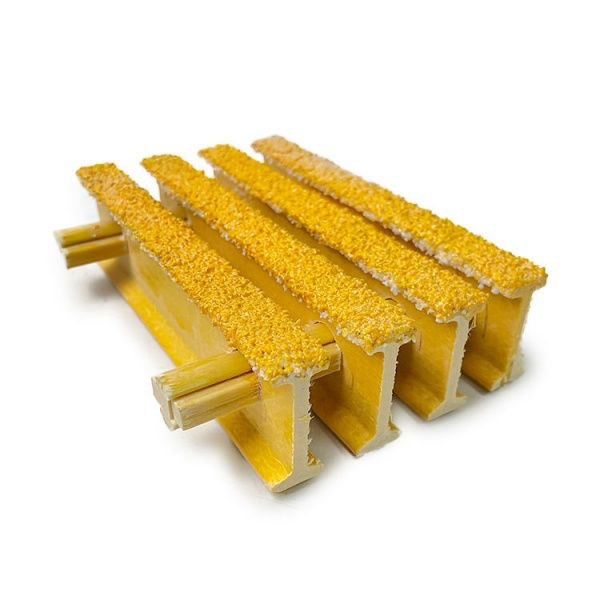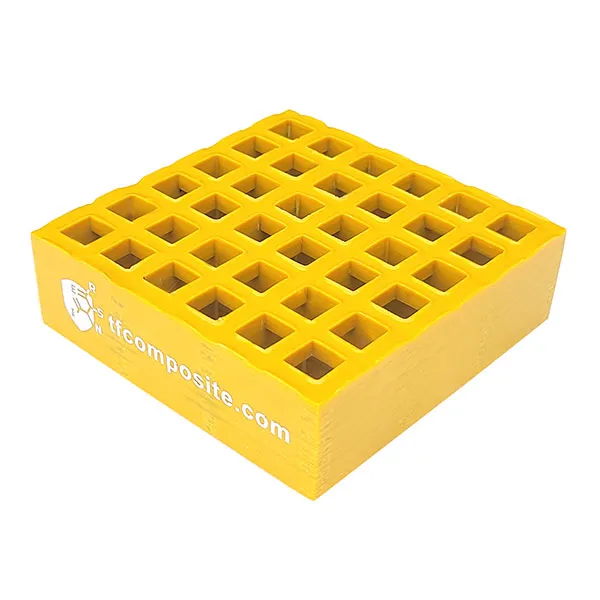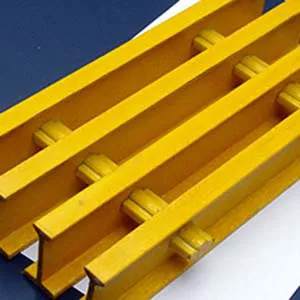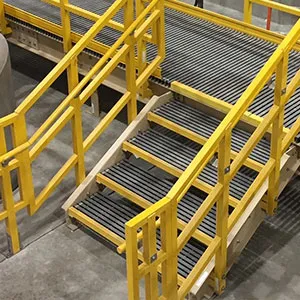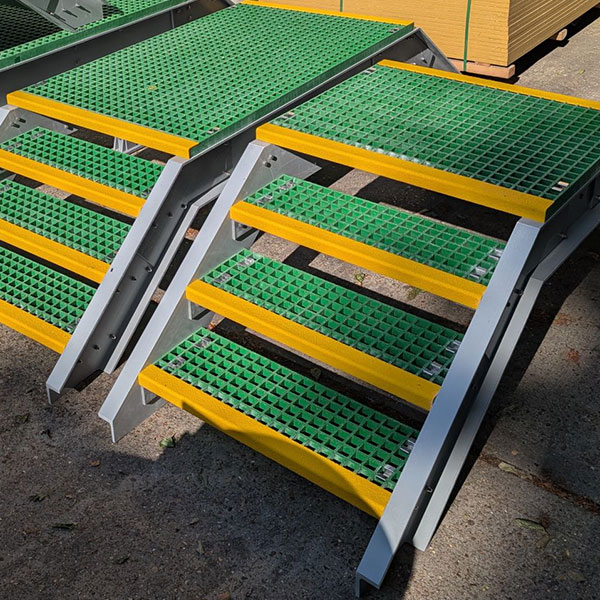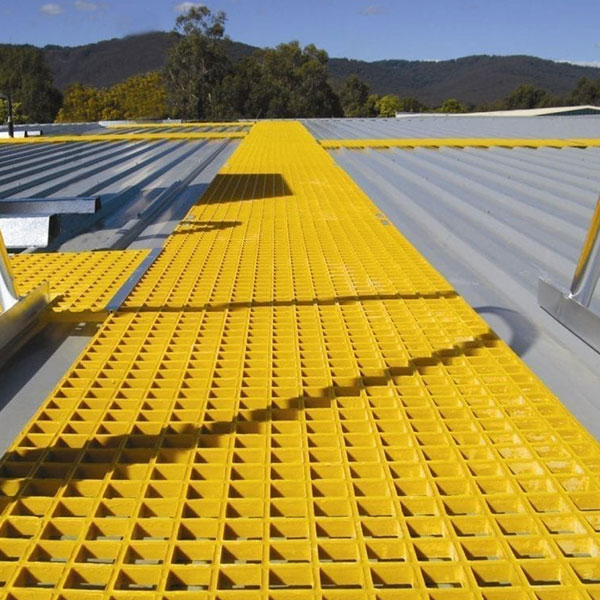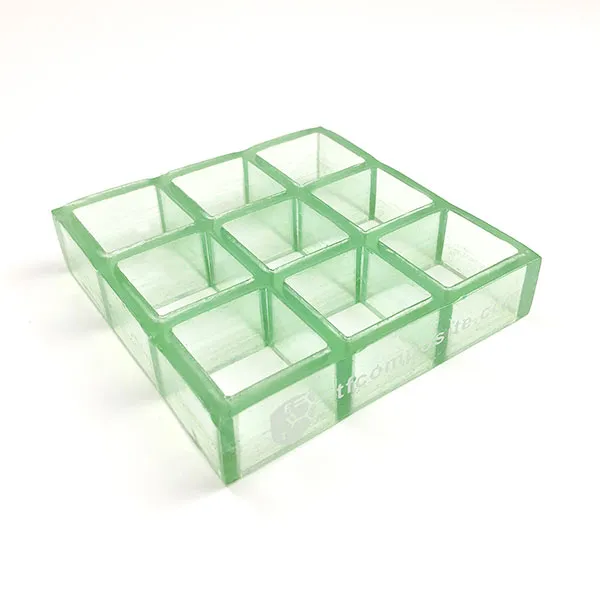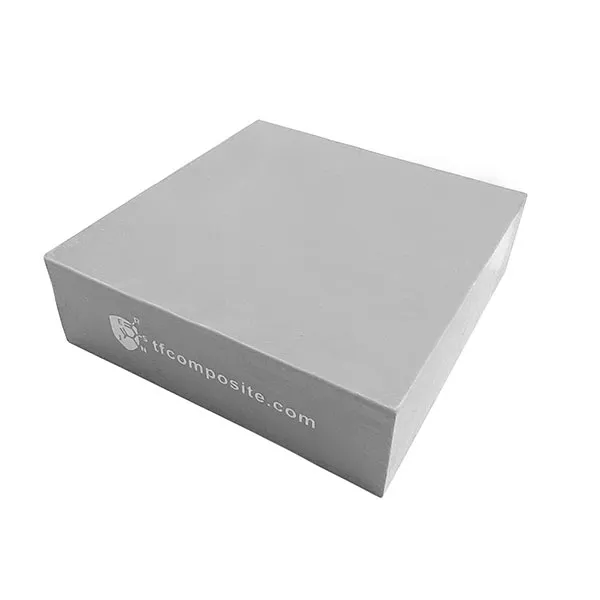Product performance introduction
Plastic grating, also known as FRP (Fiberglass Reinforced Plastic) grating, is a modern alternative to traditional metal grating. Made from fiberglass strands embedded in a thermosetting resin matrix, plastic grating offers a strong, lightweight, and corrosion-resistant solution for a wide range of applications. It is especially popular in environments where metal would corrode quickly or require frequent maintenance, such as chemical plants, wastewater facilities, marine docks, and food processing areas.
Available in both molded and pultruded types, plastic grating provides excellent strength-to-weight ratios and can withstand harsh chemicals, UV exposure, moisture, and impact. Molded grating is formed in one piece for multidirectional strength and is ideal for areas with pedestrian traffic or where drainage and slip resistance are priorities. Pultruded grating, made by pulling continuous fiberglass strands through resin and shaping them into bars, is stronger in the load-bearing direction and suitable for heavy-duty applications.
One of the key benefits of plastic grating is its non-conductive, non-magnetic, and fire-retardant properties, making it ideal for electrical safety and high-risk industrial zones. It also offers a slip-resistant surface—especially when molded with grit or serrated top layers—enhancing workplace safety.
Plastic grating is easy to cut, install, and maintain, and its low weight reduces transportation and handling costs. Its longer lifespan and minimal maintenance requirements make it a cost-effective choice over time.
Whether used for trench covers, catwalks, mezzanine floors, stairs, or rooftop walkways, plastic grating delivers both performance and value in environments that challenge conventional materials.
Plastic Grating Specifications & Technical Parameters
| Parameter | Specification Options |
|---|---|
| Material Composition | Fiberglass Reinforced Plastic (FRP) with Polyester, Vinyl Ester, or Phenolic Resin |
| Type | Molded FRP Grating, Pultruded FRP Grating |
| Surface Options | Concave (standard), Grit-top (anti-slip), Covered (solid surface) |
| Mesh Size | 38×38 mm (1.5″x1.5″), 50×50 mm (2″x2″), Mini Mesh: 19×19 mm (¾”x¾”) |
| Grating Height (Thickness) | 25 mm, 30 mm, 38 mm, 50 mm, 60 mm |
| Panel Size | Standard: 1220×3660 mm (4’x12′), 1000×3000 mm; Custom sizes available |
| Load Capacity | Varies by thickness and span; typically 500–2000 kg/m² (light to heavy-duty use) |
| Open Area | 60% – 70% for standard mesh; lower for covered or mini mesh types |
| Operating Temperature | -40°C to +120°C continuous; up to 180°C for phenolic-based FRP |
| Fire Retardancy | Available (meets ASTM E84 Class 1, UL94 V-0 for select resins) |
| UV Resistance | UV inhibitors added; suitable for outdoor use |
| Corrosion Resistance | Excellent against acids, alkalis, salts, solvents |
| Electrical Conductivity | Non-conductive, ideal for electrical or high-voltage environments |
| Certifications | ISO 9001, ASTM E84, OSHA, ANSI, BS 4592 (varies by manufacturer and application) |
Why Choose Us
Expertise in FRP Grating Manufacturing
With over 20 years of experience, our factory specializes exclusively in the design, development, and production of high-performance FRP (Fiberglass Reinforced Plastic) gratings. Our deep industry knowledge ensures that every product meets the most demanding industrial standards.
Advanced Technology and Equipment
We utilize state-of-the-art manufacturing equipment and precision molding technology to produce gratings with superior strength, corrosion resistance, and dimensional accuracy. Our commitment to innovation means your project benefits from the latest advancements in FRP technology.
Customized Solutions
From panel sizes and resin types to surface finishes and colors, we offer complete customization to meet your unique application needs—be it industrial flooring, stair treads, trench covers, or marine platforms.
Stringent Quality Control
Every product undergoes a rigorous quality inspection process, including load testing, flame retardance checks, and corrosion resistance analysis. Our ISO-certified quality management system ensures consistent excellence in every batch.
Competitive Pricing
We offer factory-direct pricing without compromising on quality. With optimized production processes and bulk manufacturing capabilities, we help our customers achieve cost savings at scale.
Reliable Delivery and Global Reach
We maintain a large stock of standard products and operate a streamlined logistics system, ensuring fast delivery times locally and internationally. We’ve successfully served clients in over 15 countries.
Hot-Selling Products
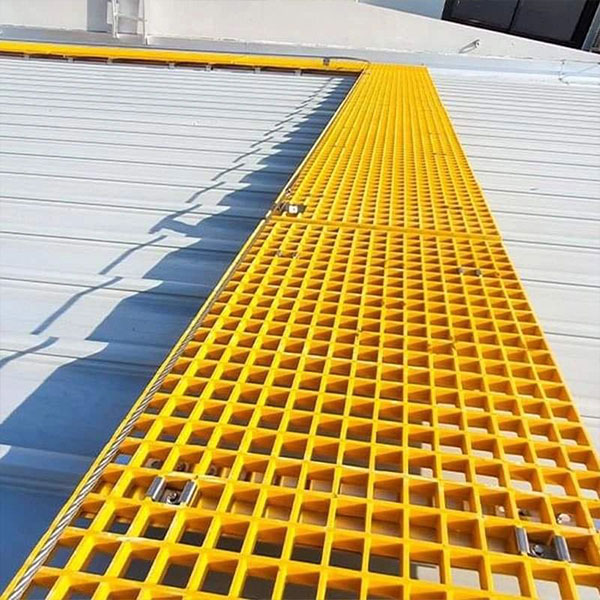
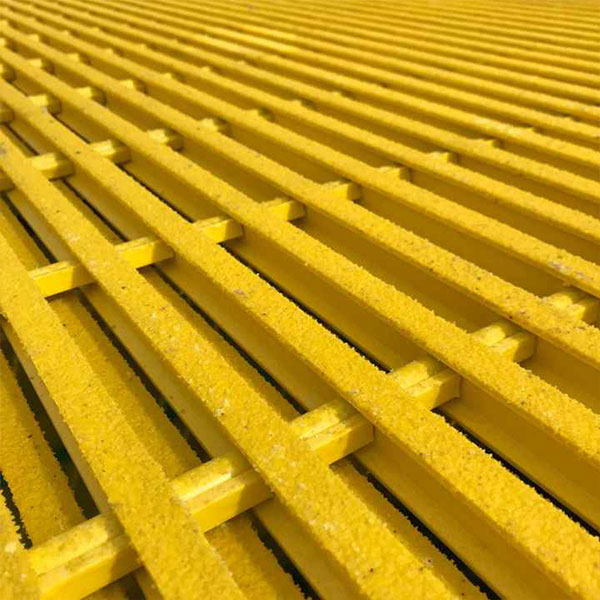

Application Scenarios

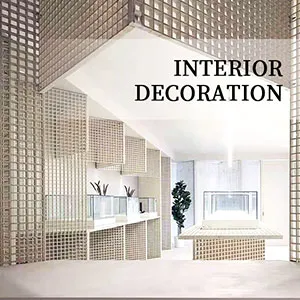



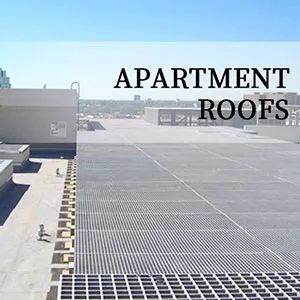

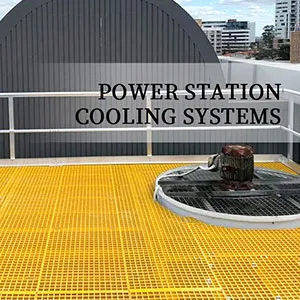
About the Factory
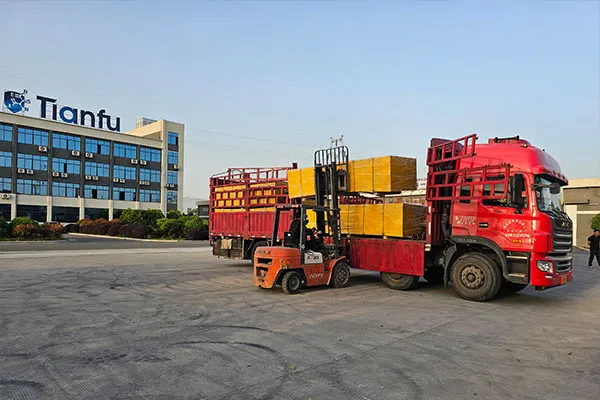
We are a professional FRP Grating manufacturer with 20+ years of experience. Our 26,000㎡ factory is ISO9001 certified, serving clients across 30+ countries with OEM/ODM capability. We provide customized solutions and fast delivery worldwide.

Our FRP gratings are manufactured in accordance with ISO 9001 standards and tested per ASTM E84 (Class 1 fire rating), ASTM D638/D790 for mechanical performance, and comply with BS 476 and EN 13706 standards. Third-party testing available through SGS and TUV upon request.
Exhibition
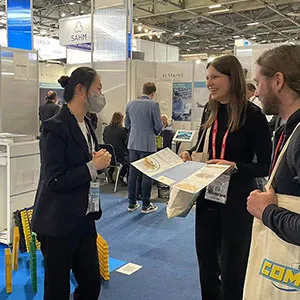
JEC WORLD 2023

JEC WORLD 2024

CAMX 2025
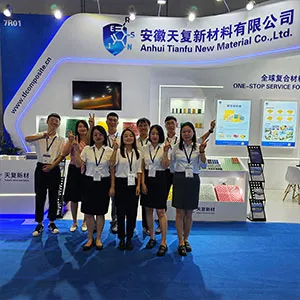
SHANGHAI 2025
Certificate
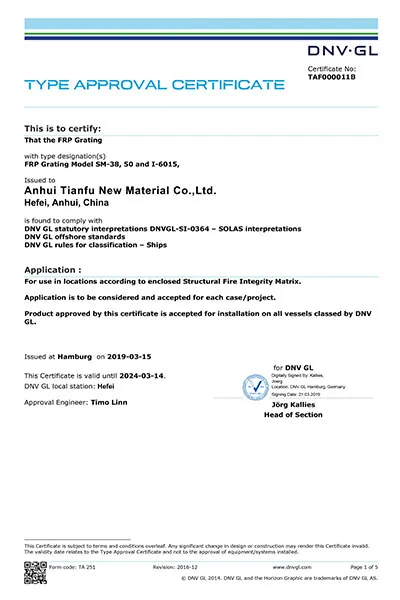


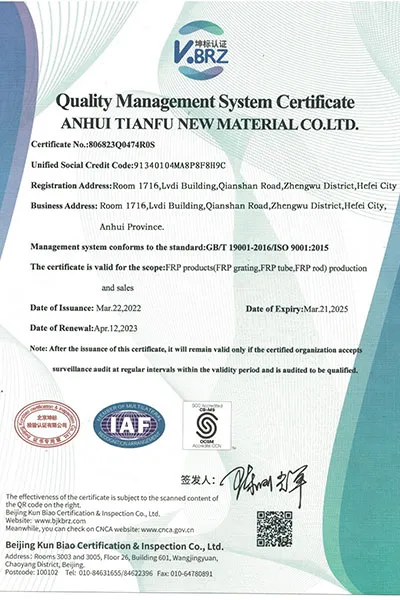
Other Products
VR Factory Tour

Plastic Grating
Series :
Fiberglass Molded Grating >application
Industrial Facilities,Wastewater Treatment Plants,Marine & Offshore Platforms,Food & Beverage Processing,Electrical & Utility Areas,Mining & Metal Processing,Architectural & Public Infrastructure
Type :
Molded FRP Grating, Pultruded FRP Grating
Surface Options :
Concave (standard), Grit-top (anti-slip), Covered (solid surface)
Mesh Size :
38×38 mm (1.5"x1.5"), 50×50 mm (2"x2"), Mini Mesh: 19×19 mm (¾"x¾")
Grating Height (Thickness) :
25 mm, 30 mm, 38 mm, 50 mm, 60 mm
Panel Size :
Standard: 1220×3660 mm (4'x12'), 1000×3000 mm; Custom sizes available
FAQ
Q :
What is plastic grating made of?
A :
Plastic grating is typically made from Fiberglass Reinforced Plastic (FRP), combining fiberglass strands with a thermosetting resin such as polyester, vinyl ester, or phenolic for strength and chemical resistance.
Q :
What is the difference between molded and pultruded plastic grating?
A :
Molded grating offers bi-directional strength and is ideal for general-purpose use with moderate loads. Pultruded grating is stronger in one direction and better suited for heavy loads or long spans.
Q :
Where is plastic grating commonly used?
A :
Plastic grating is used in chemical plants, wastewater facilities, marine environments, food processing areas, oil platforms, and walkways or platforms where corrosion resistance and safety are crucial.
Q :
Is plastic grating slip-resistant?
A :
Yes, most plastic gratings come with a concave or grit-top surface to enhance slip resistance, especially in wet, oily, or high-traffic environments.
Q :
Can plastic grating withstand harsh chemicals?
A :
Absolutely. Plastic grating has excellent chemical resistance, especially when made with vinyl ester or phenolic resins, making it suitable for corrosive environments.
Q :
Is plastic grating fire-retardant?
A :
Yes. Fire-retardant formulations are available that meet standards like ASTM E84 Class 1 and UL94 V-0, depending on the resin type used.
Q :
Can plastic grating be cut or customized on-site?
A :
Yes. Plastic grating can be easily cut using standard tools, and customized shapes, holes, or notches can be made on-site without compromising structural integrity.
Other related products

